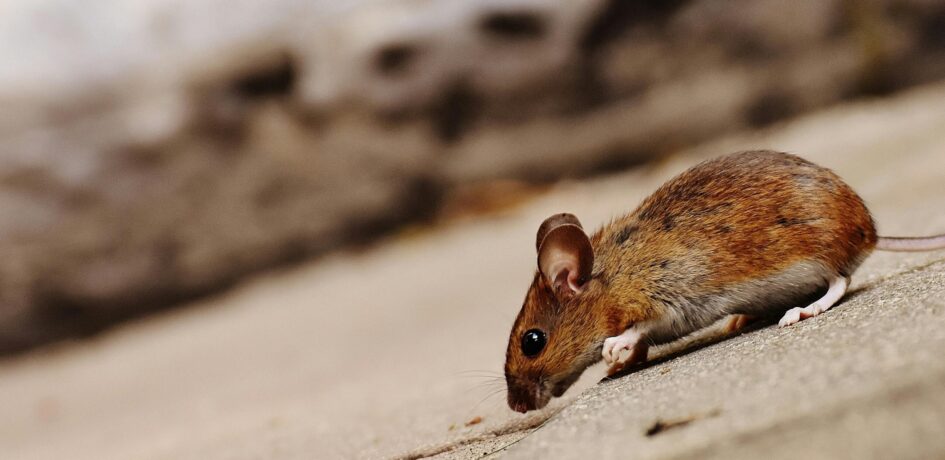Managing an extended rodent season

Facility and operations managers across the country are bracing for a new challenge this season: rodents staying active longer. Thanks to higher-than-normal temperatures and an unseasonably mild fall, what used to be a relatively predictable slowdown in pest activity after summer is now extending well into autumn — and even into winter — resulting in a higher risk of infestations in commercial facilities. To protect your property, staff and customers from this growing threat, proactive rodent control strategies are more essential than ever.
Climate trends and rodent activity
Rodent behaviour is closely tied to environmental conditions. Typically, colder weather forces rodents to seek shelter in warm places and it also slows breeding, but when autumn remains mild, rodents continue to thrive outdoors and breed longer. As the breeding season extends, their population rises which means they naturally push into human environments in search of food, water, and nesting sites. As the temperatures drop, the rodents are forced indoors, increasing human encounters and property damage.
Rodent control challenges for facilities
Rodents’ risks extend beyond the annoyance of sightings, droppings and gnawed materials. They not only carry and transmit harmful pathogens such as salmonella, hantavirus, and leptospirosis but also harbour ectoparasites such as ticks, fleas, mites and biting lice, which are also vectors of various diseases. They also damage wiring and insulation, posing significant fire hazards and maintenance challenges to your building’s structure. For facility managers, this means higher operational costs, health risks for occupants and customers, and the potential for failed inspections, fines, and liability.
With rodents staying active longer into the fall, facility managers and maintenance teams must adjust their pest control strategies to counteract rodent behaviour. In commercial environments, the risks are compounded by several factors:
- Complex spaces: Large properties like warehouses, office buildings, and industrial facilities have numerous entry points, from loading docks to ventilation systems and hiding places. They provide abundant food, water sources and multiple spots for sheltering and nesting. Once inside, rodents can settle into even the smallest of spaces.
- Frequent traffic: High foot traffic and regular deliveries make it challenging to maintain consistent exclusion measures, such as keeping doors closed. Rodents can also hitchhike inside on items shipped in.
- Inconsistent cleaning protocols: Limited storage and poor storage practices lead to clutter which prevents proper cleaning and pest control inspections. Food spills/waste and clutter often accumulate unnoticed in hard-to-reach areas, creating ideal food and habitats for rodents.
- High exterior rodent pressure: Most commercial facilities and offices are in busy commercial activity areas, next to fields, vegetation or landscaping.
Proactive strategies for fighting rodent infestations
Fortunately, several effective rodent management strategies can help facilities proactively mitigate risks during a longer rodent breeding season. Here are some essential, expert tips to help keep rodents out:
Integrated Pest Management (IPM)
An Integrated Pest Management (IPM) approach is one of the most effective ways to help prevent and manage rodent infestations. IPM emphasizes a combination of tactics including monitoring, exclusion, sanitation and ongoing various treatments, rather than relying solely on chemical treatments.
- Monitoring: Regularly monitor your facility for signs of rodent activity (droppings, gnawing evidence, grease marks along walls, nests, foul odours, etc.) to allow for timely, targeted interventions. This can be done by periodic in-house inspections by staff, a licensed pest management professional or the use of monitoring devices strategically installed in the facility after consulting your pest control provider.
- Exclusion: Perform an exterior and interior inspection of the building for structural deficiencies such as worn-out door and window seals, damaged window screens, unscreened vents, gaps and holes in walls, openings around utility entry points, cracks in foundation etc. Seal and repair all deficiencies found and install door sweeps to block entry points.
- Sanitation: Establish strict cleaning protocols to eliminate food sources and nesting materials (like paper and cardboard).
- Ongoing control program: Work with your pest control provider to inspect your facility to develop a personalized interior and exterior rodent control program that can help prevent and manage the unique risks and issues at your business.
- Harbourage and habitat reduction: Keep the building exterior free of overgrown vegetation that attracts rodents. Maintain a 30” to 36” wide vegetation-free strip around the building foundation filled with crushed ¼” crushed or pebble stones at 4” depth.
Proactive facility maintenance
A proactive maintenance schedule can help facility teams stay ahead of rodent issues. Pest control experts recommend routine inspections to identify vulnerabilities in the building’s structure. Key areas to focus on include:
- Rooflines and gutters: Check for gaps that allow rodents to access attics and ceilings.
- Loading docks and exterior doors: Install automatic door closers and seals to help prevent rodents from slipping in unnoticed.
- Vents and pipes: Use mesh covers or silicone-based sealants to block access through utility openings.
Rodent control technology
Modern pest control solutions increasingly integrate technology, making it easier to monitor and respond to rodent activity in real time. Remote monitoring devices can send alerts directly to maintenance teams when rodents are detected, reducing response times.
Some systems use infrared cameras or motion detectors to track rodent movements, helping managers pinpoint where infestations originate — even within a building’s infrastructure. In large facilities, this data-driven approach can significantly enhance pest control efforts by focusing treatments exactly where they are needed, which saves time and money.
Staff training and awareness
All employees should be part of the pest prevention process. Maintenance, cleaning and security teams need to understand the signs of rodent activity, including droppings, nests, gnaw marks and chewed packaging or products. Pest control providers often provide free staff training to help facility managers feel confident that all staff members are aware of reporting protocols. Additionally, it’s important to create a clear protocol for reporting pest sightings and educate staff on preventive actions, such as keeping exterior doors closed, disposing of food waste properly and identifying potential entry points.
Seasonal inspection plans
Because rodent behaviour changes with the seasons, facility managers should schedule regular inspections, especially during high-risk periods. Pest control experts recommend adjusting inspection and treatment schedules to align with the seasonal changes we are experiencing across the country. While facility teams can help manage some aspects of pest control, professional pest control services provide specialized expertise and equipment.
Your pest control partner can conduct thorough property assessments, identifying hidden vulnerabilities that in-house teams might overlook. Additionally, they stay updated on the latest products and technologies, ensuring treatment strategies are as effective as possible and compliant with health and safety regulations.
Staying proactive with rodent control
Milder fall temperatures are here to stay, meaning facility managers and maintenance teams must adapt their pest control strategies to handle an extended rodent breeding season. Taking a proactive, integrated approach using monitoring systems, exclusion methods and professional pest control services will help facilities stay ahead of infestations.
By understanding how rodent behaviour is evolving and investing in targeted solutions, facility managers can help protect their buildings, budgets, and people from the growing threat of rodent infestations. Preparing now will help ensure that when increased numbers of rodents inevitably seek warmth and shelter come winter, your facility won’t be on their list.
RELATED: Keeping pests out as warm weather continues
Alice Sinia, Ph.D., is the Quality Assurance Manager of Regulatory/Lab Services for Orkin Canada, focusing on government regulations pertaining to the pest control industry. For more information, email Alice Sinia at [email protected] or visit orkincanada.ca.
The post Managing an extended rodent season appeared first on REMINET.

